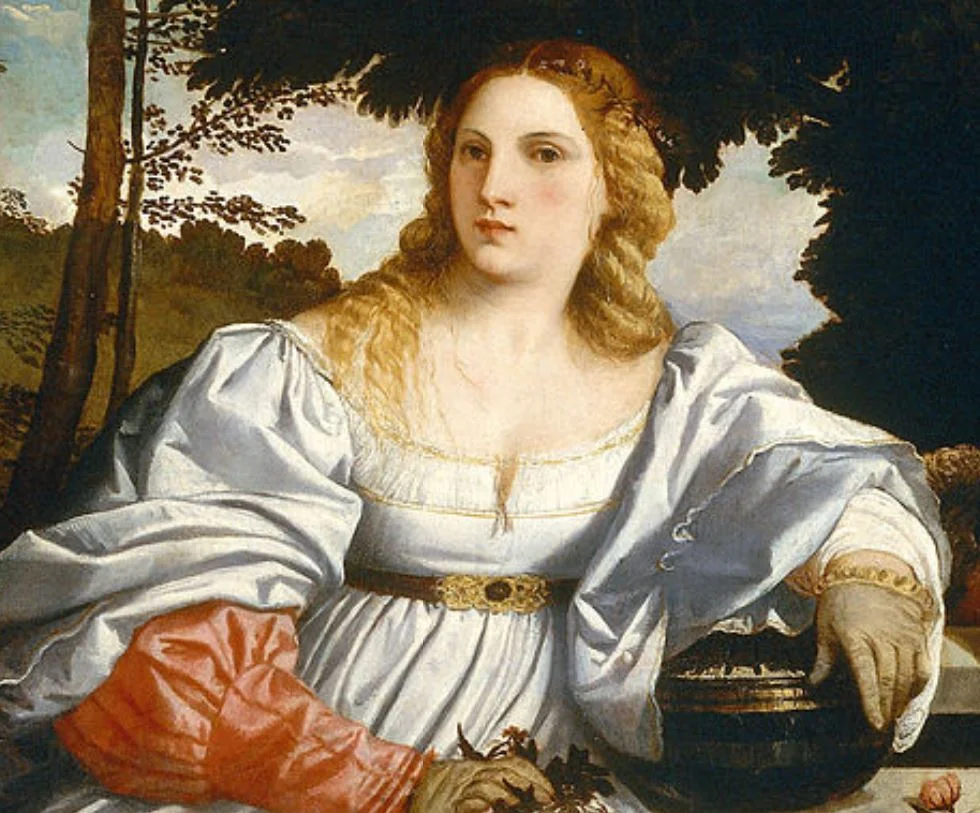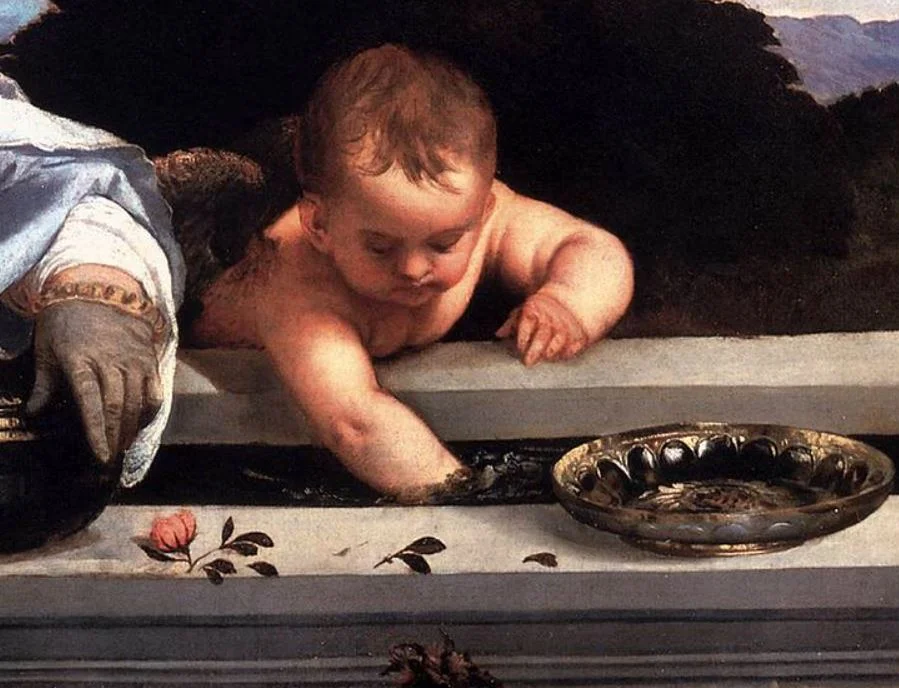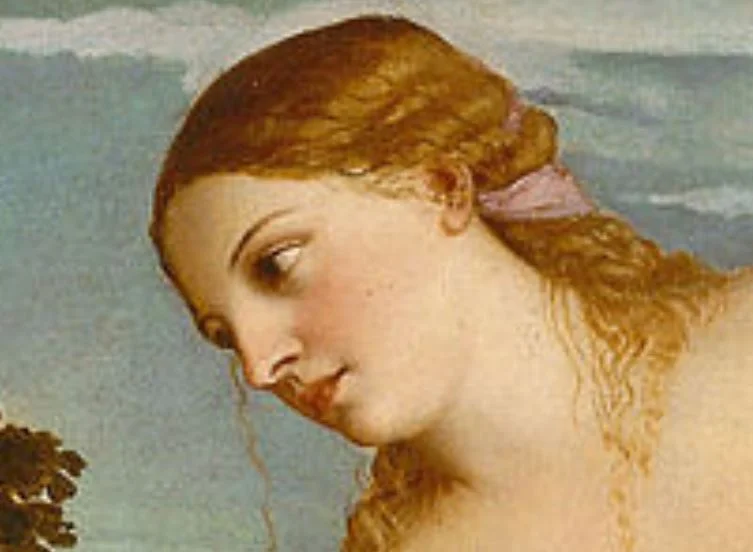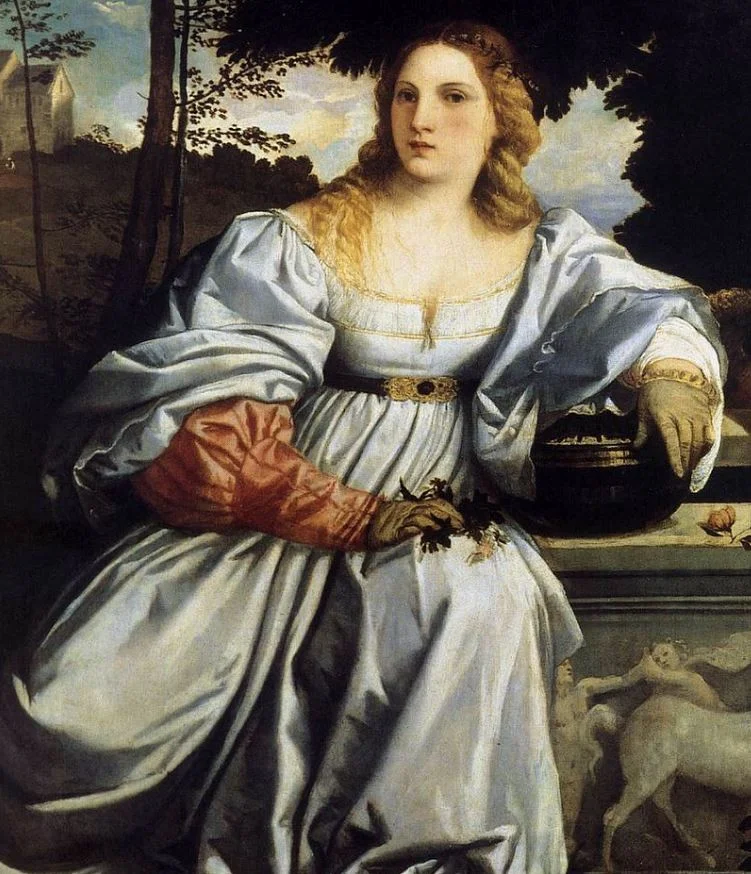Art historians are still debating the true meaning of one of the most famous paintings by Tiziano Vecelli (1488-1576), one of the most renowned Renaissance artists in history.
Let’s take a closer look at some of the most interesting facts about Sacred and Profane Love by Titian, a mysterious and intriguing work of art from the master of the Venetian School.
1. It was painted in the early 16th century
Sacred and Profane Love, or “Amor Sacro e Amor Profano” in Italian, is the title of one of the most famous works created by Renaissance artist Tiziano Vecelli, better known as simply Titian.
Even though the exact date of the work remains unknown, it’s generally assumed that the work was completed in the year 1514. The exact birth year of Titian also remains a mystery, but it’s assumed he was born around 1488-1490, which means he was only in his mid-twenties when he completed this masterpiece.
The man went on to have an extremely long life (the year of his death was 1576) and his style changed quite a bit over the decades. Regardless, the finesse and subtlety of this painting clearly show his maturity at a relatively young age.

2. Most art historians have a consensus on the true meaning
While the painting remains a mystery and the true identity of the figures remains disputed, it’s generally assumed that the painting was commissioned in celebration of a wedding.
This general consensus ends when trying to guess who the women in the painting really are. It’s possible that the women represent a duality of the goddess Venus referred to as “Geminae Veneres” or “Twin Venuses.” The clothed woman ould then represent the earthly Venus or “Venere Vulgare,” and the other the celestial Venus or “Venere Celeste.”

3. It was probably commissioned by a Venetian government employee
It’s also possible that the clothed woman in the painting depicts a woman who is about to get married, especially since is wearing clothes that have been recognized to represent those of a bride.
This theory is made strong because Titian included the coat of arms of the “Council of Ten” on the sarcophagus. This means that it’s possible that the painting could have been commissioned by a man named Niccolò Aurelio who was a secretary of the governing body of the Republic of Venice at the time.

This man was about to get married to a young widow named Laura Bagarotto at the time, who is then potentially the depicted woman in the painting.

4. It’s unclear whether the current name of the painting is relevant
One of the most remarkable facts about Sacred and Profane Love by Titian is that this title of the painting was only mentioned for the first time during an inventory in the year 1693. This means that the title potentially has nothing to do with the real meaning of the work.
In case it does reflect the real concept of the painting, the clothed woman would represent profane love, referring to normal individual concerns, and the naked woman the sacred love, referring to (probably) marital unity.

5. It could be that the two women were modeled on the same person
Another remarkable fact about this painting is that the resemblance of both women is quite striking. This could mean that the two depicted women were actually modeled on the same person, potentially the young widow Laura Bagarotto.
The most common explanation is that the depicted woman is indeed the woman who is about to get married, accompanied by the goddess Venus. The little child would then be Cupid, the son of the love goddess Venus.

6. There’s something odd about the clothed woman
If we take a close look at the clothed woman in the painting then we can instantly see that something’s quite off. She leans to the side but it would be impossible for the metal bowl that she’s holding to support her.
This is in sheer contrast to the nude figure who comfortably sits on the edge of the fountain or sarcophagus with one hand resting on it.
The other oddity is that it appears to be impossible for her to sit on the edge of this stone trough as she’s too low. Her knees are wide apart as well which doesn’t seem right.
The only logical explanation for this is that this might be a flaw in the anatomical depiction of people sometimes found in Titian’s early works unless the woman is actually sitting on something else.

7. Nobody really knows what the reliefs on the sarcophagus mean
Another interesting detail about this painting is the sculpted relief on the sarcophagus, and yet again, there is no general consensus as to what they represent. If they represent Biblical stories then it could be that they depict:
- The Conversion of Saint Paul, who is depicted as falling off his horse.
- Cain killing his brother Abel.
- Adam and Eve standing beside the Tree of Knowledge.

8. The buildings in the background were used before by Titian
On both sides, in the background, we can see buildings in the distant landscape. Titian clearly got inspiration from the “Dresden Venus” (1510) for this one as the group of buildings, a work he presumably completed following the death of his colleague and master Giorgione.
He did, however, reverse the buildings and included a large fortified defense tower to it. He included the same set of buildings into another work that he completed around the same time as Sacred and Profane Love as well called “Noli me tangere” or “Don’t touch me.“

9. Specific animals might reveal a bit more about the painting
Below the group of building on the left side of the painting, we can see two rabbits, a sign of lust and fertility during the Renaissance. On the right side of the painting, below the steeple of a church, we can see a hunting scene in which dogs are chasing another rabbit, while two lovers are sitting nearby.
The rabbits and especially the scene on the right strengthens the theory that the painting was indeed commissioned in celebration of an upcoming wedding, as rabbits were often sued in these types of paintings during this period.
This could lead us to the conclusion that the painting is basically an allegory on marriage.

10. It has been in the same location since the early 17th century
What happened to the painting upon completion remains a mystery until it was bought by Scipione Borghese in the year 1608, the nephew of Pope Paul V who amassed great wealth as the Pope’s secretary and who used most of his money to buy art.
This also means that Sacred and Profane Love by Titian is still in the Borghese art collection and is on public display at the Galleria Borghese in Rome today!

